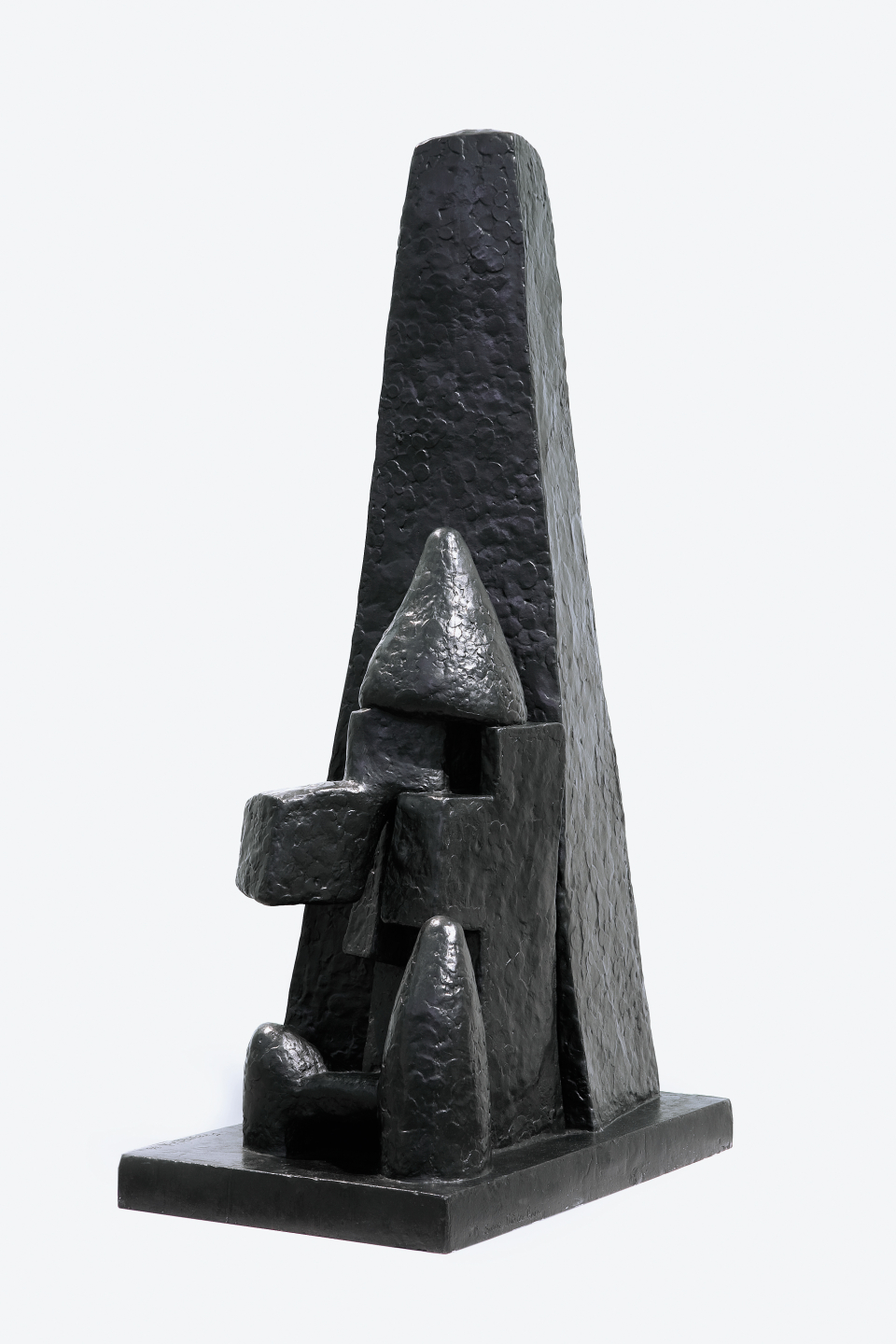Sculpture architecturale
nicht ausgestellt
Intro
With his paintings and sculptures, Otto Freundlich was a pioneer of modernist art. He was also among those artists persecuted by the National Socialists whose works were removed from German museums after 1933. His »Architectural Sculpture« manifests an individual approach to abstraction. Originally planned as a 25-meter-high, monumental sculpture, the work, produced in Paris in 1934/35, is composed of geometrically abstracted parts in the Cubist style. However, it also exhibits traces of figurative bodies, for example the tall obelisk, the helmet-like cone, and a type of throne in the foreground.
This combination awakens figurative associations and generates a manifest tension: Is this an abstract figure cowering at the foot of the obelisk? Freundlich’s sculpture is characterized by a strict architectural configuration, while the interplay of organic and constructive forms are more akin to archaic sculptures.
Background
Among the most important stations of Otto Freundlich’s life were Berlin, Cologne and Paris. Through his close contacts to the November Group in Berlin, to the Progressives and the Surrealist circle in Cologne and his acquaintance with the Cubists and the Abstraction-Création group in Paris, he followed his own individual path to abstraction, particularly in the field of sculpture. His encounter with the Gothic cathedral at Chartres also influenced his artistic development towards a figural style based on triangles and rectangles, on geometric, abstract segments in the Cubist tradition, such as his »Architectural Sculpture«, created in Paris in 1934/35. In this large sculptural work, originally planned to be some 25 metres high, one can make out figurative details as well as non-representational cuboid and round elements, including an obelisk, a helmet and a throne. Since Freundlich had planned the work as an architectural monument, he dispensed with the working out of details in favour of the long-distance effect, as well as determining a precise frontal view. Thus, the basic composition of his “mountain sculpture” consists of the statically closed form of a pillar, which tapers as it rises upwards and which contrasts with an open figuration formed from a number of individual geometrical components. In connection with the clearly recognisable obelisk, the building shell, fragmented in several places, appears at its feet, on the one hand, like a seated figure and, on the other, seems to evoke an empty throne with a canopy, which looks rather like a conical hat.
Compared with other works in Freundlich’s modest sculptural oeuvre, this work is characterised by a strong architectural form, which also determined the heads he created around 1910. The emblematic dimension of the work, reduced to the essentials, is compensated by its soft edges and roughly structured surface. The interaction between a form which has grown organically and one which has been constructed geometrically immediately places the sculpture in the vicinity of protohistorical sculptural objects. In his art-theoretical texts written at the same time, Freundlich describes sculpture as “a constant struggle between its conservative spirit and its revolutionary spirit”. In 1938, he explained his social artistic goals in the text »The Pictorial Space« as an alliance between his universal visions of a synthesis of the arts with social change brought about by this. As a monumental sculpture designed for a public space, the »Architectural Sculpture«, which defines space as a changeable medium that gives rise to sculpture, represents the ideal of a social structure.
Acquired with funds from the Museum Shop 1996
